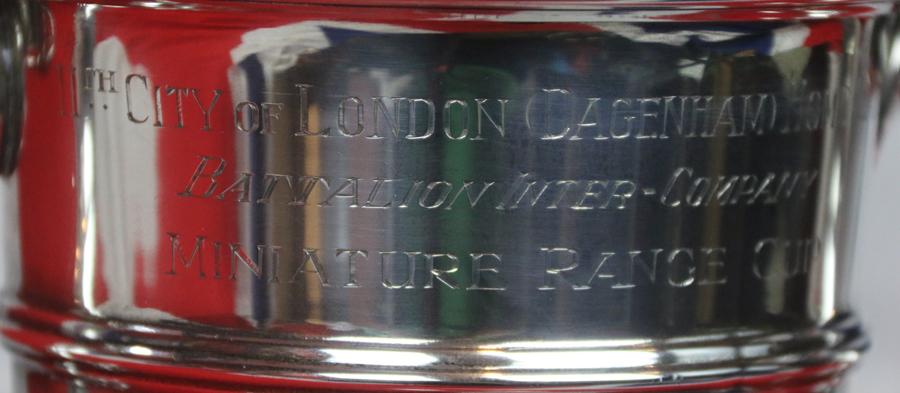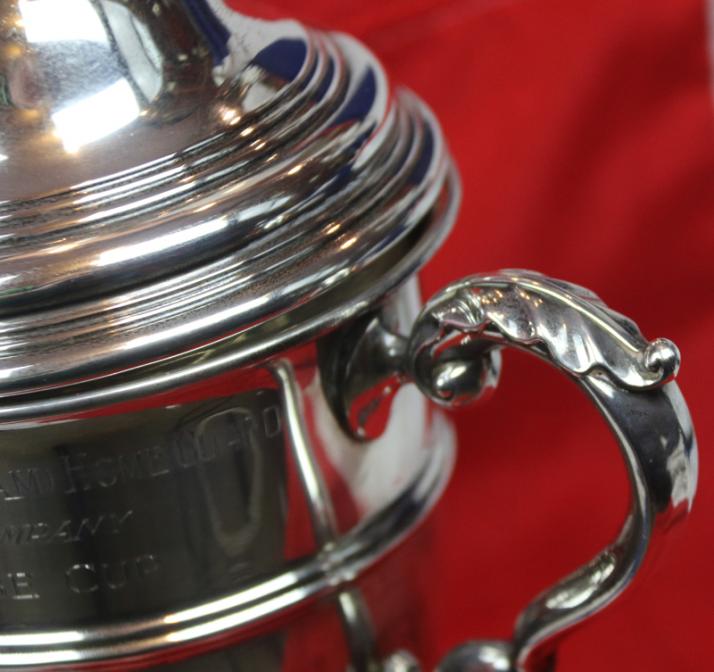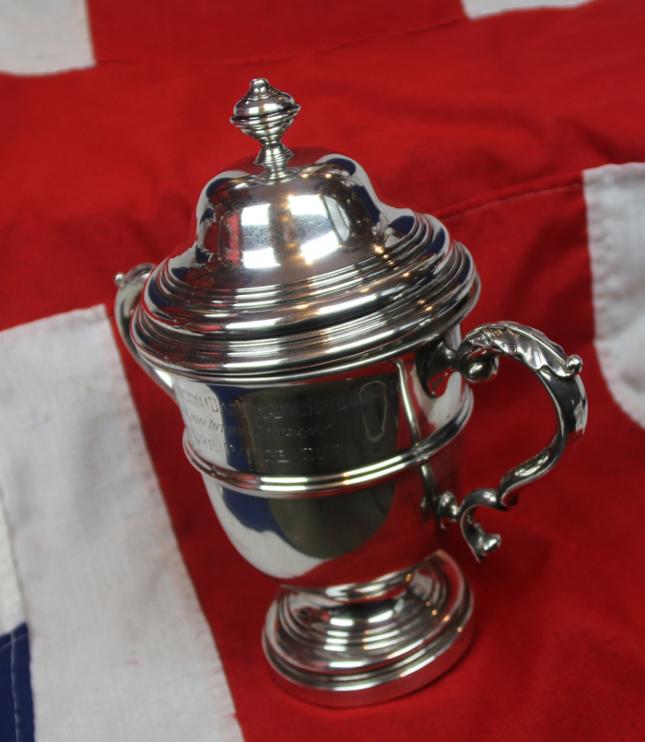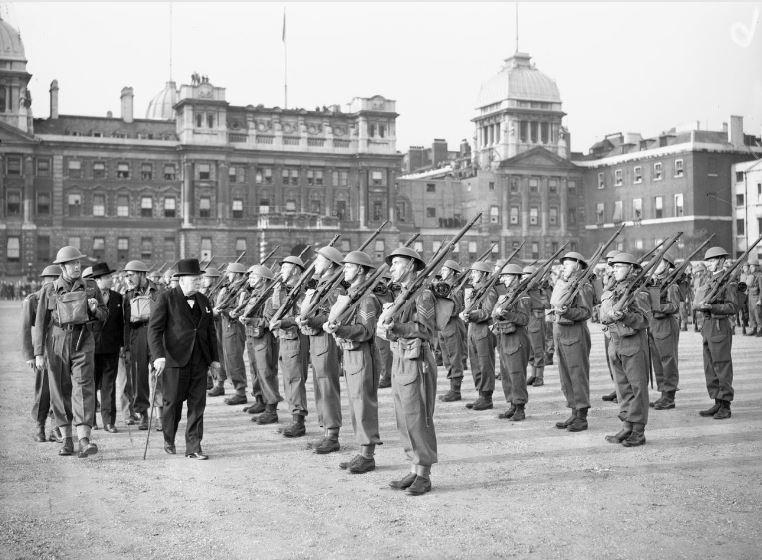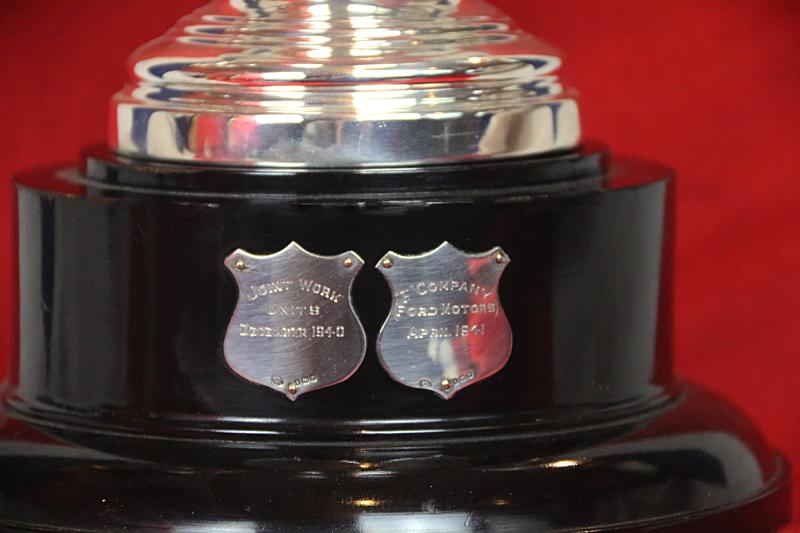Original WW2 Home Guard Memorabilia The 11th City of London Home Guard Solid Silver Challenge Shooting Cup, & Gloss Black Lacquered Circular base with Two Presentation Shields, With Winners Selected As Snipers for Ultra Top Secret WW2 ‘Auxiliaries’
650 grams, 1.4 lbs of solid silver. Hallmarked and dated Birmingham 1938
Interestingly it was the winner's of such trophies that were specifically chosen as sniper's for Churchill's secret assassin's and guerrilla force, 'The Auxiliaries'.
A unprepossessing name that hid their highly top secret purpose, to assassinate senior ranking Germans, to blow up bridges and enemy communications, if, and or when, the occupation of Britain was accomplished, after any German invasion took place.
Highly skilled, often retired, expert shooters, gamekeepers or former munitions experts, recruited into the most secret force Britain ever created. Men, that were often believed by their neighbours to be shirkers or cowards for not joining up, that were hidden in top secret bunkers around the country after the invasion, to harry the German's and create fear and havoc among the swinish occupiers.
Their top secret orders included the assassination of British women that fraternised with German's, and to assassinate the country's regional Chief Constables. These were leaders of Britain's police forces that were by no means collaborators or assisting the German's willingly, but the men that knew everything about Britain's local defences etc. information that must not fall into enemies hands.
Needless to say none of Britain's Chief constables were ever told of their potential fate after any invasion.
It is said in certain circles such shooting competitions were organised by the British SIS Secret Intelligence Service to root out such men, possessors of their specific set of skills and abilities perfect for the killing of German occupying officer's etc. and men that could be trusted to keep a secret.
Member of the Auxiliaries were sworn to secrecy, signed the equivalent to the Official Secrets Act, and often instructed to denounce the British war effort in public, and resign from the Home Guard. All to allay even the remotest suspicion, if the need arose, that they could possibly be covert occupation assassins. Even after the war's end, for many decades following, these men often never even told their families their secret purpose during the war, some even going to their graves maintaining their incredible secret. Some vilified for all their remaining lives as appearing to be cowards for not assisting the war effort, even denouncing it. The epitome of the definition of true heroes.
"He that would keep a secret must keep it secret that he hath a secret to keep." -Sir Francis Bacon
A superb looking and sizeable solid silver trophy, and out of interest it is near identical to the US Open Women's Trophy won by Emma Raducanu in September 21. The 11th City of London Dagenham Home Guard, Battalion Inter-Company Miniature Range Cup. Hallmarked silver. Wartime competition dated, with company winners, from 1940 to 1944. Its most notable member was Major William Thomas Forshaw VC
The Home Guard (initially Local Defence Volunteers or LDV) was an armed citizen militia supporting the British Army during the Second World War. Operational from 1940 to 1944, the Home Guard had 1.5 million local volunteers otherwise ineligible for military service, such as those who were too young or too old to join the regular armed services (regular military service was restricted to those aged 18 to 41) and those in reserved occupations. Excluding those already in the armed services, the civilian police or civil defence, approximately one in five men were volunteers. Their role was to act as a secondary defence force in case of invasion by the forces of Nazi Germany.
The Home Guard were to try to slow down the advance of the enemy even by a few hours to give the regular troops time to regroup. They were also to defend key communication points and factories in rear areas against possible capture by paratroops or fifth columnists. A key purpose was to maintain control of the civilian population in the event of an invasion, to forestall panic and to prevent communication routes from being blocked by refugees to free the regular forces to fight the Germans. The Home Guard continued to man roadblocks and guard the coastal areas of the United Kingdom and other important places such as airfields, factories and explosives stores until late 1944, when they were stood down. They were finally disbanded on 31 December 1945, eight months after Germany's surrender.
Men aged 17 to 65 years could join, although the upper age limit was not strictly enforced. Service was unpaid but gave a chance for older or inexperienced soldiers to support the war effort.
Its base is a separate entity, and not affixed. Bearing, two shield plaques of named ‘company’ winners, dated Dec 1940 and April 1941, there are 6 further named ‘company’ winners on the reverse of the cup.
Most interestingly the shield for April 1941, states the trophy was was won by 'F Company', Home Guard', of the Ford Motor Company, Dagenham
The base is 7 3/4 inches across, 3 inches high.
The cup hallmarked dated to 1938 is 10 inches high, width at maximum including handles 9 3/4 inches
The total height of the cup standing on the base will be 13 inches
Code: 23892
675.00 GBP



